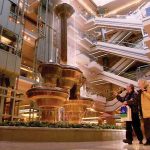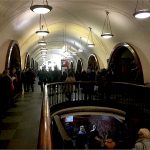Decorators or Architects?
The role of ideas about society is seldom regarded properly. It is like treating a decorator as if they are architects, the way ideas about society are discussed. Changes are proposed based on what already exists rather than what could exist. This proposal is not about redecorating, it is about moving out and starting over on the fresh ground. This is possible because we use a comprehensive understanding of nature as a foundation for our assumptions about who we are and what we can do. Based on this we can define a solid agreement adequate to establish a new society able to grow rapidly in productivity and move easily beyond our current limitations.
Like many ideas, MetaCity began when I saw a problem and a solution came into my mind. The work of Paolo Solari and his Arcologies was fascinating but the problems with putting everything in a megastructure as he illustrated seemed immense. As my mind raced to understand how it could really work, I quickly realized that the equivalent of a delivery truck, just the body, but not the truck would be an answer. This was in 1978 and that general idea has had more than forty years to mature. Solari did not want to redecorate the City, in his mind he moved out with the intention of rebuilding on a new foundation. Paolo Solari was an Architect trained and inspired by Frank Lloyd Wright. Like many creative people, he quickly blazed his own path, conceptualizing not just a building, but an entire city based on harmony with nature using an innovative design.
Unlike Solari’s Arcology designs the MetaCity Design is not about innovative totally controlled structures, but about the systems that could enable them to exist, the social, economic and business components required for them to emerge from an intentional social structure composed of many minds, not the mind of a single architect.
MetaCity Design is about creating a development concept that is inclusive to all of human society, one that can be built in the present by innovating within existing social and business structures while the old systems remain productive. It will need to be presented at multiple levels simultaneously, showing that it provides answers to daunting problems in every sector of government, business, and society. To move forward, we need to frontally attack the specter of institutional inertia with a bold proposal to lead humanity into the future by inviting every person to focus their efforts on leading their families and communities forward using hard work and creativity.
A broad and far-ranging discussion about this among all people will only take place when they can see and understand their role in the process. Since we need an inclusive agreement that affects all the players equally this project presents a global treaty as the proper foundation for a new society able to become a new civilization. All the players mean the people, nation states and all subunits of them as well as our planet’s many organizations made of people and legal entities.
The idea of a treaty is carefully considered. The goals of a treaty must be realistic and account for the many existing vested interests, as well as the evolution of society. It must be a tool to focus the energies of all involved toward the creation of new and better ways to deal with our collective needs without destroying what already exists. Its success can only come from the willing adoption by all the parties as a better way to do what they are already doing. This can be done. Our objective is to facilitate the adoption of technology to solve the problems of everyday living for average people. Urban centers are particularly important since an increasing number of people are moving toward the service infrastructure that they represent. For this reason, the intention is to enable simplified mobility that can be embraced by small groups of people regardless of where they live. Moving from rural to suburban and then to the urban environment should be a smooth, even seamless transition because of communications and logistics based on that level of information technology. A treaty to stimulate the creation of an advanced society will need to focus on a limited set of problems and solutions to form a self-reinforcing network of government, business, social and cultural entities that can conserve resources and restore nature while growing a better life for all involved.
The Municipal Electronic Trade Act can do this. Its objective is to streamline the existing legal structures of the various governments to allow a new class of energetic and creative people to build a hyper-productive economy that creates its own resources and is able to restore the planet to a pristine natural state at the same time. The treaty will create a set of global processes that can be adopted by small towns, medium cities, and large urban areas to enable their small business people to function cohesively as part of a global engine for a low resource consumption society that can provide fully for the needs of all people.
The Design a New Civilization Project is not dependent on the adoption of a global treaty, but it does need the discussion of the treaty to begin, as the high-level conceptual discussion will be necessary for all the governmental units to accept the necessity of needed changes. The system will produce the public demand for a treaty eventually, but all the operating rules of the system will be predicated on the existence of the treaty, whether by treaty or contract with the operating units.
Next: Design a New Civilization Project in layers.
Layer 1: The Global Legal Framework
Layer 2: Global Information Networks
Layer 2: Urban, Suburban, and Rural Integration
Layer 3:


















